Clothing in Ancient Egypt refers to the manner of dress of the inhabitants of this era in Ancient Egypt, as well as the colors used for clothing.
As in all countries, the climate determines the shape, fabrics and colors with which clothing and accessories must be made. In Egypt, clothing was a direct consequence of the hot and dry weather and the outdoor lifestyle.
Only linen clothes were worn , although cotton was initially used , linen was imposed on the belief that it was purer, and planted for textile purposes, linen production was very important and was the fabric used for almost all ancient Egyptian history.
The favorite color was white, although it could carry some drawings on the edges.
The wool was known but was considered impure, because all fibers animals were subject to impairment, and were only used for coats, and forbidden in temples and shrines where priests wore white linen clothes.
The silk was the fabric used in the Ptolemaic era and cotton in the Arab period.
Types of linen
There were four types of linen, depending on the thickness of the thread, the combination and the density of the weft.
The real linen, which is the finest
Fine subtle fabric
Subtle fabric
Plain fabric
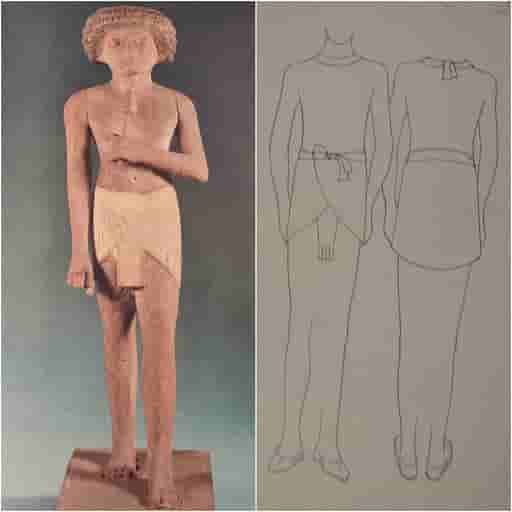
Popular costumes
The peasants, the workers and the people of modest condition, used to go with a loincloth and if they dressed they wore only the shenti on the other hand used by the men of every social condition, which consisted of a kind of skirt that rolled around the waist and tightened with a leather belt.
By 1425 BC a light robe, or sleeveless shirt, as well as a kind of pleated blouse began to be worn.
Costume of the nobility
Among the people of high position the piece was decorated with embroidery and placed on a brief or tunic.
On top of the schenti, people of distinction wore a kind of short [skirt] forming small folds, which to leave the house was changed to a [tunic] with or without sleeves, both of fine texture.
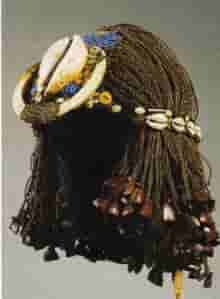
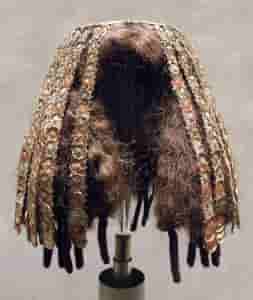
To cover the head both male and female used a false hair, and the men a particular headdress, the claft, which was formed with a square fabric made with a striped fabric, adjusted to the forehead and with falls on the sides.
The royal costumes are well documented; they dressed similarly to the rest of the people, although using the distinctive symbols, such as the scepter and the Egyptian crown.
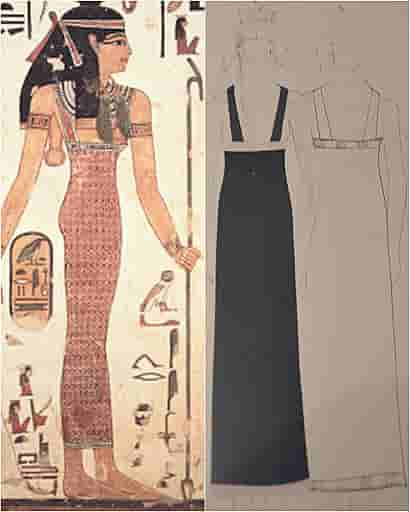
Women’s wardrobe
The female dress remained the same for several millennia, modified only in some details.
The women wore the long skirt and with a very high waist, like a long, tight one-piece dress, fastened with two suspenders that were sometimes wide and wrapped their breasts.
They also wore a kind of short garment covering their shoulders. The way to put on the tunics was very varied, giving the impression of constituting different clothes.
Sometimes they used a very fine cloth, other times they were nuanced and painted fabrics, decorated with various motifs that mimicked, for example, a plumage like goddess Isis’ wings.
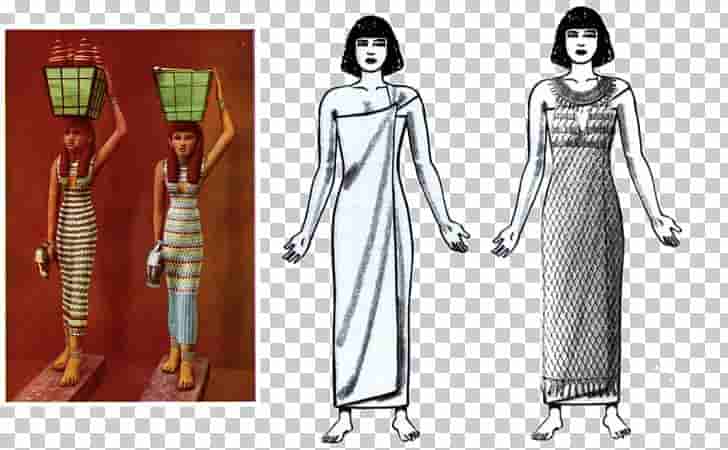
Footwear
The footwear could be domestic or ceremonial and was used in certain situations and by certain people.
They wore slippers made with plants or with vegetable fibers, which for kings and magnates could be of other materials, such as braided leather, and carry all kinds of ornaments, finishing off at a tip bent upwards.
The sandals holder was a major administrative function. The owner was in charge of preparing the records, of organizing what was necessary before a trip, of collecting the demands at the hearing.
The one that had the title of pharaoh’s sandals holder, was one of the most influential men in the country, one of the main characters, is the Ramses II sandals holder.
In everyday life, the ordinary man went barefoot and only on a special occasion he wear sandals ,when he had to go somewhere he carried his sandals in his hand or linked them to the end of a cane to fit on when he reached the destination.
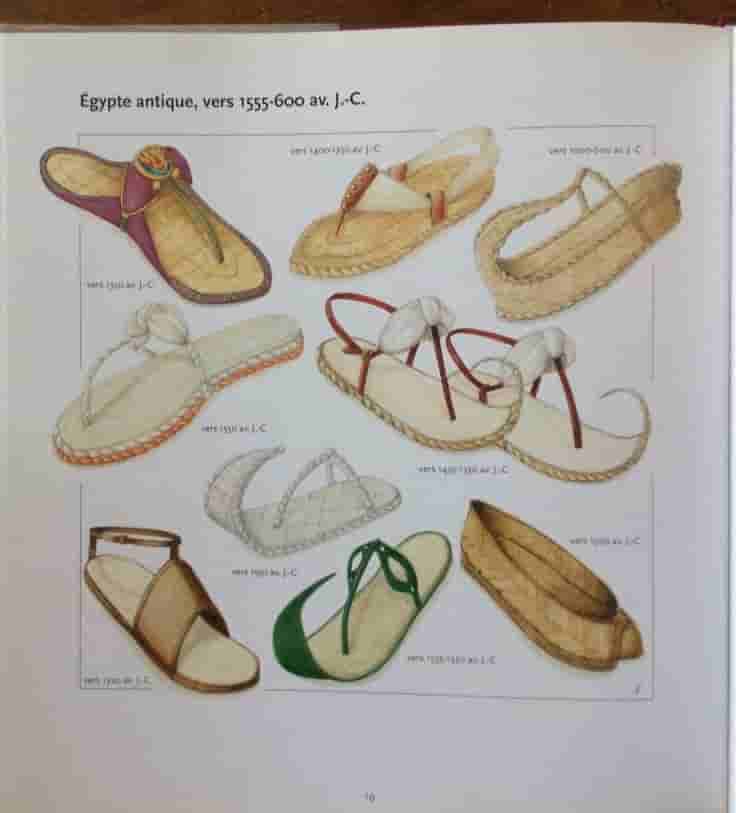
Makeup in ancient Egypt
The use of makeup was always well considered, they even had a myth explaining this custom.
When Horus fought Set he lost an eye, so he invented makeup to restore the perfection of his beauty, the use of cosmetic products to repair the damage of time or make up on life’s accidents are therefore justified.
This explains the great variety of products such as oils, kohl, eye drops, red for the lips and cheeks, conceived by the Egyptians of ancient times and used, and more than 160 recipes that describe their elaboration, which sometimes lasts several months.
The powders were used to bleach the skin of the face. Two different types of masks were used for the eyes: one black to draw the contour and accentuate its almond shape, and another green for eyelashes and eyebrows.
By crushing the galena, the Egyptians obtained a black dye, in which the tone varied according to the fine dust: when it was reduced to very fine dust, the dye was very dark black if it was crushed with less precision had metallic reflections.
With this powder they made the kohl. The eye makeup was done with malachite, and they used the ocher to get the color red.
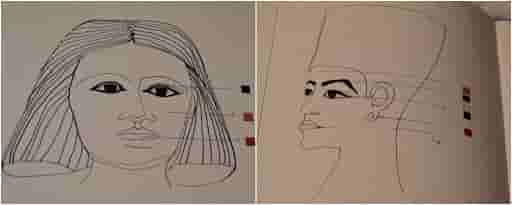
All these products were mixed with animal fats to compact them and achieve a more lasting conservation. The ancient Egyptians were the people of antiquity who practiced more the art of makeup; no other people have used it so much.
Cosmetic products began to be used to protect against the effects of the hot and dry climate of Egypt.
Thus, kohl protects and takes care of [conjunctivitis] and scented oils served, and still serve, to moisten the skin and restore its flexibility.
The nails and hands are also painted with [henna]. They did not make any perfume with alcohol. However, they grew flowers to aromatize other products.
The Fayum region around a desert lake, fed by a branch of the Nile was the main producing area, especially in the New Kingdom, when floods were regulated with dikes.
Jewelry in ancient Egypt
It was a country that liked ornaments, which used by all social classes, although those of the peasants were simpler.
The jewels were large and heavy. The [bracelets] were also large. More stones were used in addition to the lapis lazuli the carnelian and turquoise and metals copper, silver and gold, which was much more abundant. It was considered flesh of the gods.
A special creation of Egypt was a kind of ornament made with a set of metal discs and which was worn directly on the skin or on a short-sleeved shirt and tied on the back.

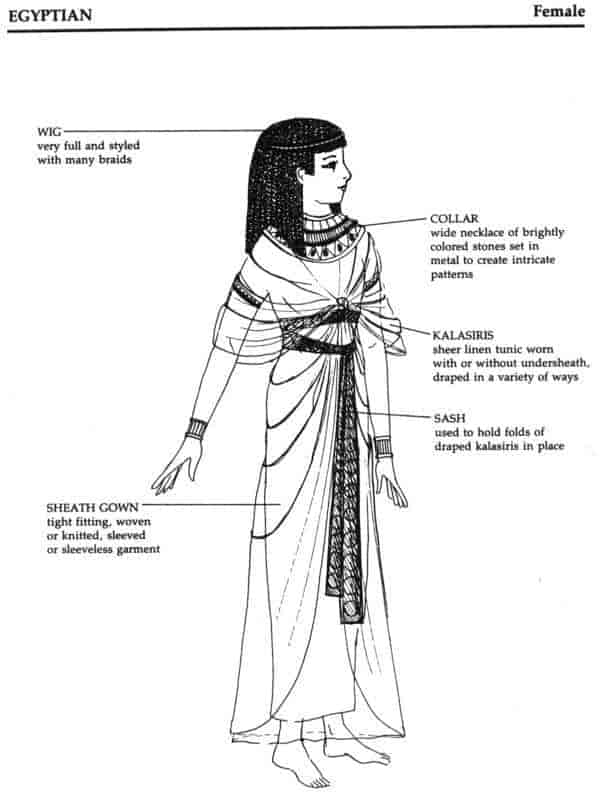
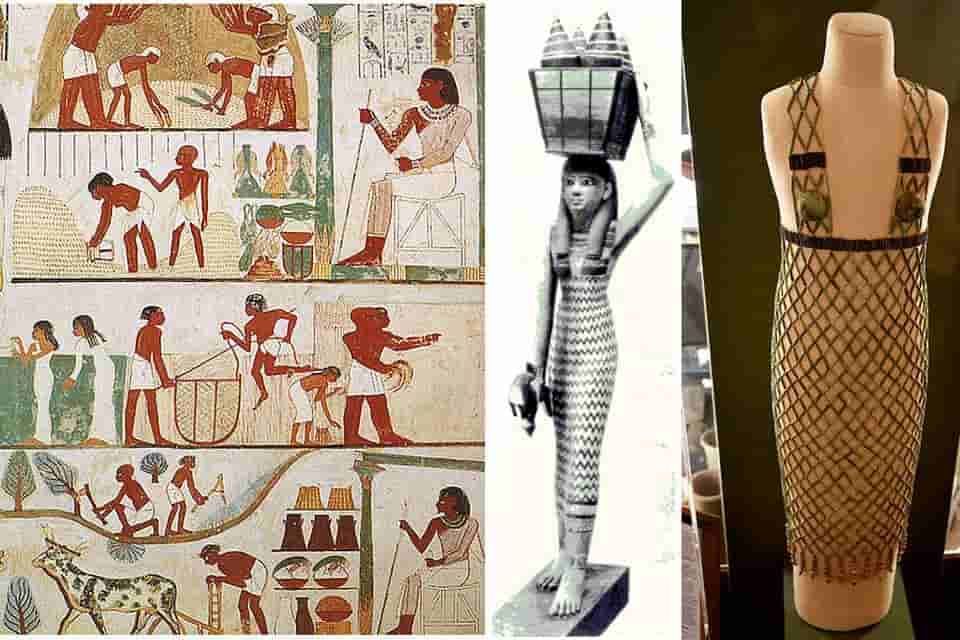
First photo: chatirygirl, CC, Some rights reserved, via Flickr
A diorama of ancient Egyptians in the Royal Museum of Scotland






